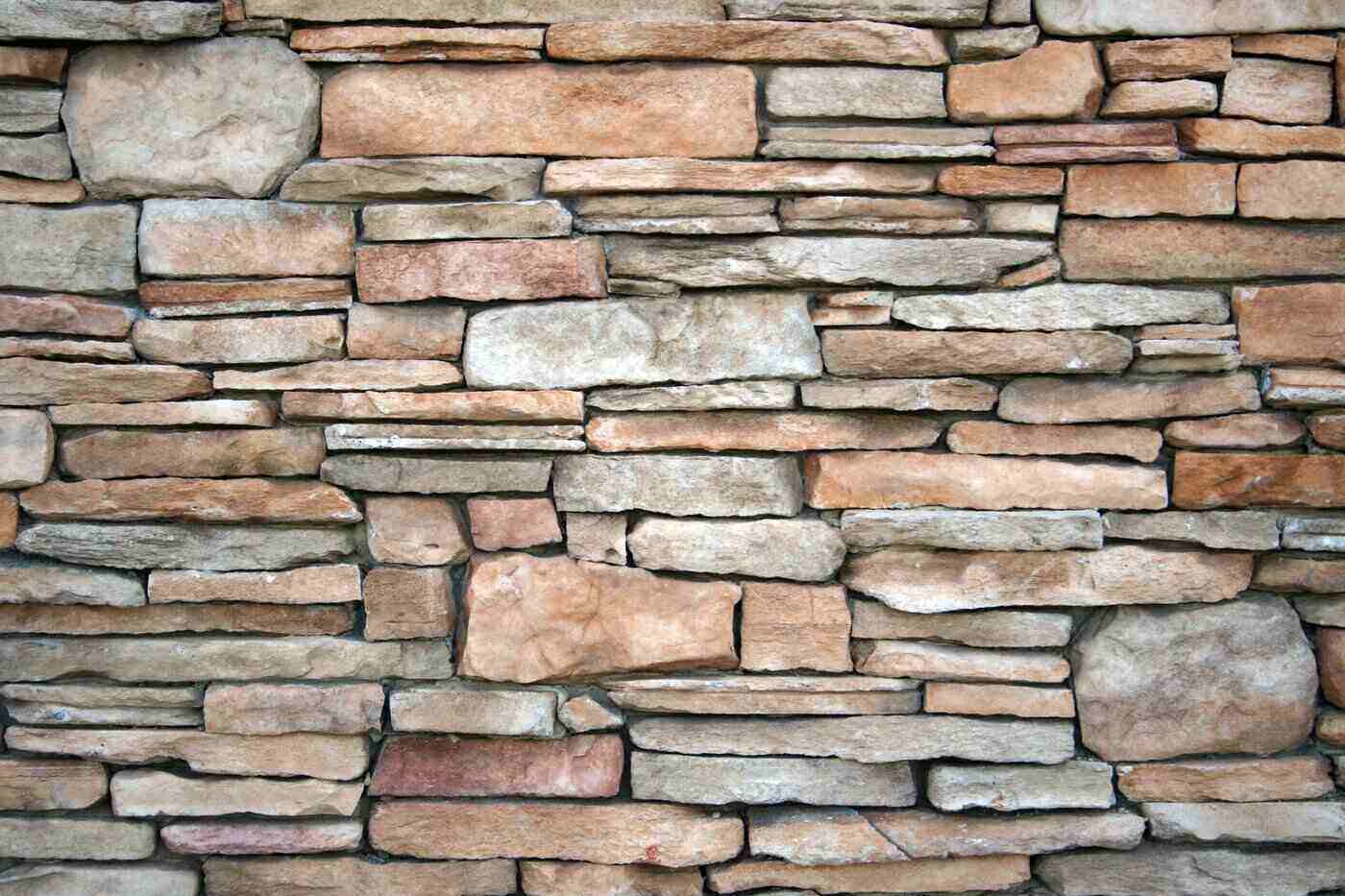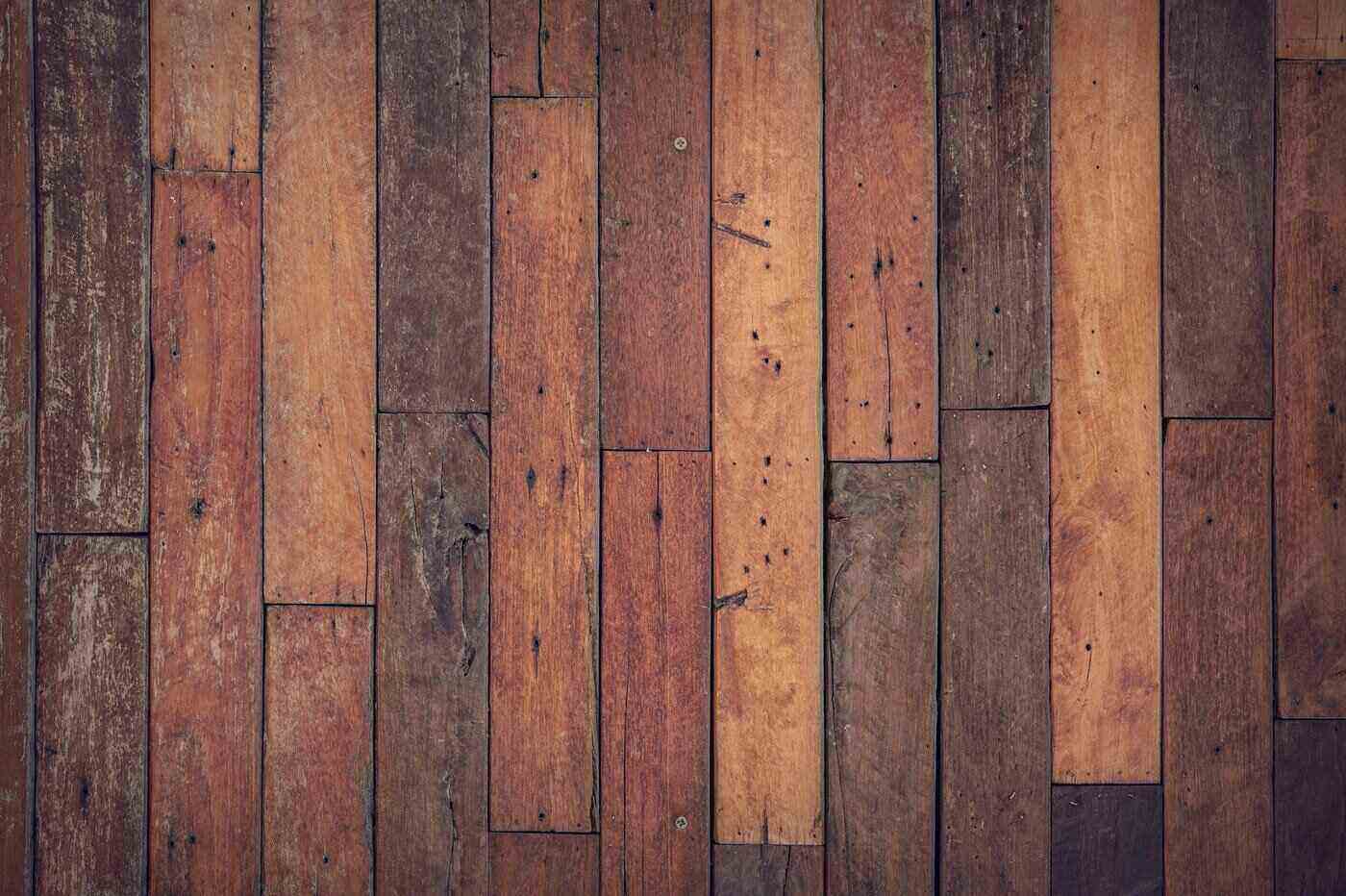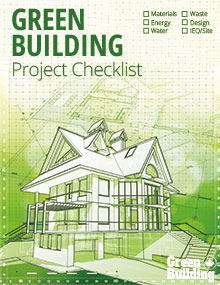Our green building materials guide offers an introduction to choosing and using materials more sustainably in your building and renovation projects. If you’re interested in learning about your options when it comes to sustainable materials, or in how to evaluate a material’s sustainability, this guide is for you.
The guide is divided into four sections. The first two focus on common choices for green construction and finishing materials. The third offers suggestions on how to tell if a material is eco-friendly and how to ensure your building materials are as green as they’re advertised to be. The final section discusses how you can plan for the end of your material’s lifespan and divert it from the landfill.
We’ve focused on information and suggestions that would be helpful for those working on residential projects, although what we present here could be scaled up for larger buildings. We’ve also included links to further reading in each section should you wish to follow up on anything we discuss.
I. Green Building Materials
There are a few criteria you can use to determine if a building material is “green.” A material might be considered green if it’s:
- Natural and non-toxic
- Renewable
- Produced sustainably
- Processed and manufactured with close attention to resource efficiency
- Local
- Recycled, reused/recyclable, reusable
- Durable (and therefore in less frequent need of replacement)
A material might hit one of these marks or it might hit many. A key consideration with any material, regardless of how many marks it hits, is its embodied energy, i.e. the amount of energy it takes to get the material from its raw form into the hands of users.
The following are some of the most common green building construction materials you’re likely to encounter. We’ll explain what each material is used for, what makes it green and what environmental costs you might consider.
Cellulose
Cellulose insulation is made from recycled paper fibres. It therefore has lower embodied energy than many insulation products. By necessity, it requires fire retardants, which may or may not be less toxic than conventional options, depending on the product.
Earth
Earth is used in the construction of walls and floors, with some techniques allowing for it to be used as a roofing material, as well. There are various techniques for building with earth, including adobe, cob, rammed earth, compressed earth blocks and bricks, superadobe or earthbag and earth-sheltered homes.
Earth is as natural as it gets. Depending on where and how you build, your supply of earth might be about as local as it gets, too. Earth-building processes have a low carbon footprint and produce little to no waste.
The high thermal mass of earth builds also help a building be more energy efficient over the course of the building’s lifetime. There are no real environmental downsides to building with earth.
Fibre Cement
This material is made into boards or shingles as an alternative to vinyl siding. It’s a durable material that, depending on manufacturer, might also be made only of natural wood fibres. Otherwise, it’s likely to contain portland cement, which has a high embodied energy.
Hempcrete
Hempcrete is a composite of hemp, lime and water that’s used for insulating walls and attics. Hemp is natural and can be found locally. It also stores carbon when installed. As with any crop, the environmental costs of growing and harvesting vary from supplier to supplier.
Insulated Concrete Forms
These are hollow forms (like panels or blocks) that are made of a composite of materials like rigid polystyrene foam and plastics. They’re filled with concrete during construction. They create walls that replace the need for conventional framing and insulation.
The environmental benefits are mainly about the airtightness and high energy performance they allow buildings. The concrete and polystyrene that make up this material have a high embodied energy, but Maria Saxton of Rise points to studies that suggest that this is offset by the energy performance of the home over time.
Recycled Steel
You’ll find recycled steel options for structural and framing elements, roofing, siding and even as a complete prefab building kit.
Recycled steel is durable and recyclable at the end of its lifespan. The embodied energy of steel is quite high, however, since the processes of steel production, transportation and recycling still require much in the way of resources.
Stone
Nowadays, the primary uses of stone in construction are for features like accent walls, landscaping, patios and steps.
Natural and durable, stone may also be local as well as efficiently produced. The environmental costs associated with stone are largely associated with transport. The further the stone has to travel, the less environmentally-friendly it becomes.
Structural Insulated Panels (SIPs)
These panels are used for walls as well as roofing. They’re often made of a skin of oriented strand-board (OSB) filled with rigid polystyrene insulation, although materials can vary by manufacturer. Depending on the material and the size of the project, they may require additional framing.
Much like insulated concrete forms, the primary green benefit is the impressive thermal performance they offer. And much like ICFs, that thermal performance is often considered to offset the not-sustainable nature of the materials of which SIPs are made.
Straw Bales
Straw bales can be used as load-bearing walls, but they might also serve as the infill in a wood-framed house.
Straw is durable, renewable and biodegradable when it reaches the end of its lifespan (which will not happen while it’s in your walls, if everything is properly sealed). It may have been grown sustainably and may also be local, depending on your region.
The twine that holds the straw bales together could be made either from natural sisal or from polypropylene. Natural twine is common, however, and shouldn’t be difficult to source.
Wood
A pervasive framing material, wood is used in roofing, walls, floors, even whole buildings. It’s used in many forms, of course, from lumber to plywood to cross-laminated timber to chipboard to logs.
Wood is natural and can be sustainably grown. It has low embodied energy, stores carbon dioxide when installed and can be reused at the end of its lifespan.
Unsustainable forestry practices have negative impacts on local ecosystems, so finding suppliers invested in responsible harvesting is key. The carbon footprint of wood will vary depending on your proximity to your supplier.
Further Reading:
Find more detailed information about rammed earth construction in this article.
We discuss 5 affordable green construction materials here.
Sustainable Sources LLC gives practical information about the environmental impacts of various materials.
II. Green Finishings
The materials that go into finishing your home have an additional impact on indoor air quality. For your building or renovation projects, pay special attention to the toxicity of the material to avoid off-gassing in your home after you’ve installed it. Here are some of your more common options for finishing materials:
Bamboo
Bamboo is used in a wide range of finishings. Flooring, cabinets, countertops and wall coverings can all be made of bamboo.
Bamboo’s green credentials rest largely on its renewability. Bamboo growth handily outpaces timber growth, plus, bamboo plants aren’t killed when they’re harvested. Like wood, they can be produced sustainably, although that’s not a given.
For us in Canada, the biggest environmental downside of bamboo is the carbon footprint it leaves behind. The shipping to Canada is a definite weight against bamboo’s more eco-friendly qualities.
Clay
Clay takes on many forms, most notably as various types of tiles for floors, backsplashes, countertops and wall cladding. Clay also works as a highly eco-friendly plaster and a finish for walls and ceilings.
Ceramic, porcelain and terracotta tiles are all natural clay options that are durable and might be produced locally. These tiles can be re-used at the end of their lifespan, and so, reclaimed tiles are also easy to find.
The glazes applied to tiles to seal them may or may not contain harmful chemicals, depending on the product. Manufacturing processes (i.e. kiln-firing) are energy-intensive, although terracotta is fired at much lower temperatures and therefore requires less energy to produce.
Cork
Flooring and wall coverings are the most common places you’ll find cork. Like bamboo, cork is a renewable natural product. It’s the bark of the cork tree that’s harvested—the trees aren’t harmed by the process, and the bark grows back. Cork production actually promotes local biodiversity. It’s also recyclable and compostable.
Also like bamboo, the environmental costs of cork are in the shipping. Transport from the Mediterranean to Canada gives cork a higher carbon footprint than if it could be purchased locally.
Stone
As a finishing material, stone is most often used on floors and countertops. There are many different types of stone (slate, marble and granite, for example). All are durable, obviously natural and can be reclaimed and reused.
With stone products, sealing can create environmental problems. Sealants are often composed of toxic chemicals, but there are natural, eco-friendly sealant options on the market. Location is also a factor in stone’s sustainability. Transporting stone across the globe comes with a big carbon footprint.
Wood
As a finishing product, wood can be used as flooring, doors, counters and cabinets, window frames, banisters, railings and trim, among other things. Its environmental benefits and disadvantages are listed above.
Further Reading:
This infographic details options for eco-friendly materials, pros, cons and considerations.
III. How to Determine if Your Product Is Sustainable
Once you have an idea of the materials you’d like to use in your building or renovation project, you’ll need to research what sustainable product options are available to you. A material might be green in theory, but in practice, producers and manufacturers will have a wide range of harvesting and production methods that might add to or seriously detract from a material’s sustainability.
John Amatruda tells the Whole Building Design Guide (WBDG) that because of this variability in production, it’s up to individuals to get informed and stay informed. He recommends first researching the “health and environmental impact issues” of different material types. Second, he advises us to familiarize ourselves with any standards (i.e. “[g]overnment, industry or third-party standards”) that might be used as a tool to evaluate a product’s greenness. Finally, he recommends learning about the “specific green attributes” and “performance characteristics” of available options.
Questions to Consider
Here is a list of questions you might ask about the “specific green attributes” of the product you’re considering, in order to help you gauge how environmentally friendly it is:
- Is it made with materials that are renewable? Abundant? Recycled? Biodegradable?
- Where do the raw materials come from? Where is the product manufactured?
- What measures is the producer taking to limit their impact on local ecosystems? To promote local ecological health?
- What efforts are being made towards minimizing resource consumption at all stages of production (from raw material to the finished product on the store shelf)?
- How is the manufacturer/producer working to minimize waste?
- What resources are used in its transportation?
- Is there third-party verification or certification to back up the environmentalist claims of the producer/the manufacturer?
- Is there evidence that the product has been ethically grown, harvested, processed and/or manufactured?
- How is the product expected to perform (in terms of durability, for example, or energy efficiency)? How has the product performed under real conditions?
- What ancillary products will the product require in order for it to become functional (glues for hardwood floors, for example, or mortars for tiles)? Are there non-toxic options for those products?
Life Cycle Assessments (LCA)
Life cycle assessment is an advanced way to evaluate a product’s sustainability. Rajesh Kumar Singh of Green Business Certification Inc. (GBCI) explains that an LCA is a tool that helps those in the building industry “understand the energy use and other environmental impacts associated with all life cycle phases of [a] building: raw material procurement, manufacturing, construction, operation and decommissioning.”
It’s a cradle to cradle (or cradle to grave) analysis that can be used to quantify, as Amatruda says, “all relevant environmental impacts for materials” so users have data to better inform their purchasing and building decisions.
He warns, however, that an LCA is a highly complex undertaking with no standard methodology, and that accurate data on all stages of a material’s life has thus far been challenging, and sometimes impossible, to obtain.
Certification Labels
Certification labels can be an excellent tool for evaluating whether a product is environmentally friendly.
You can research what certification systems are available for the material type you’re considering, and learn what each label means and what each producer/manufacturer must do to earn certification.
Investigate the certifying organization, as well. Look for certifications from governments, non-profit or advocacy groups or groups with expertise in specialized aspects of green building—these types of organizations will be more objective and reliable.
Not every material will have certification options specific to its type, but there are many more general labels that evaluate and award products based on particular aspects of green building (waste management, for example, or responsible water usage).
Further Reading:
This is our more in-depth look at LCAs.
For LCA software, try BEES (Building for Environmental and Economic Sustainability), from the National Institute of Standards and Technology.
Ecolabel Index offers descriptions of ecolabels in Canada, for building materials and beyond.
Elemental Green has this list of certification labels that are not exclusively Canadian but are exclusively about labels for building products.
IV. How to Plan for End of Life
Builders and renovators might not have the control they’d like over where their materials come from, but they have a great deal of control over where those materials end up. For your build or renovation project, you can select materials that are designed to be recycled or repurposed at the end of their lives, and you can build with end-of-life in mind.
Start your building planning by considering what will happen when each material reaches the end of its useful life and needs to be replaced. What will happen to your cabinets, for example, when they need to be updated? To your roof or siding?
You might develop your plan with zero waste principles in mind: refuse, reduce, reuse, recycle and rot. Refuse materials that create a lot of waste during manufacturing, or that need to be replaced more frequently.
Reduce your need for materials by planning a smaller space, for example, or by building walls with a higher thermal mass that reduces your need for insulation.
Purchase materials that can be easily repaired and then deconstructed and reused or repurposed should you want to swap them out. Choose materials that contain recycled content and that you can recycle yourself instead of putting them in the garbage.
And finally, for features that might need replacing or updating more often, you can pick materials that you can compost when you’re done with them.
Further Reading:
This is our guide to finding waste materials to build with.
You can learn about building deconstruction here.
RE Store offers this step-by-step guide to deconstructing a house.
Feature image: Pixabay; Image 1: 500photos.com; Image 2: FWStudio; Image 3: James Wheeler





